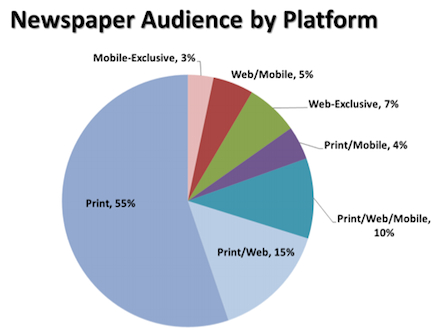- News has a place in social media, but usage varies by site. Half of Facebook and Twitter users get news through their sites, as do 62% of Reddit users. With Facebook's high penetration, that means about 3 in 10 Americans get some news from Facebook. There's also some variation in use by site: Twitter is used to get breaking news, while Facebook is used more to share news with friends and followers. 78% of those getting news via Facebook see news items while using Facebook for other purposes.
- Audiences for news on social media differ by platform
- Social media carries, and is used by news consumers, for a wide range of topics. Almost half of Facebook news users report that they get news on 6 or more topics. Top news categories on Facebook include Entertainment News, Local community news, and sports. Local news topics account for at least 3 of the top 10 topics (I suspect a lot of the interest in, and use of, sports news is about local teams and events).

- Social news users not only get news via their social media, they're increasingly engaged with it: sharing or reposting news, discussing news, and posting their own photos, videos, and information about news events.
- News consumers who go directly to news sites for their news tend to be much heavier news users than those who get to news sites through Facebook or search engines. Those going directly to news sites go more often, consume more content, and spend more time than those arriving at news sites via referrals from social media and search engines.

- On Twitter, groups of people often come together in response to news events they care about. These groups tend to be those with strong opinions, which aren't likely to reflect broad public opinion. In addition, the rapid pace, short content limits, and lack of gatekeeping on Twitter means that initial opinions may be moderated as news consumers get more information
Sources - 8 Key Takeaways about Social Media and News, PewResearch Journalism Project report
State of the News Media 2014, full PewResearch Journalism Project study



























